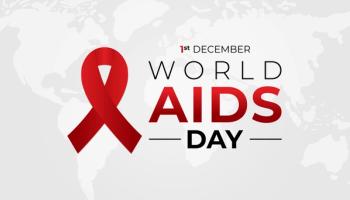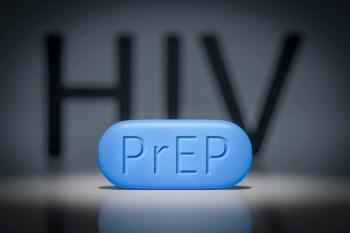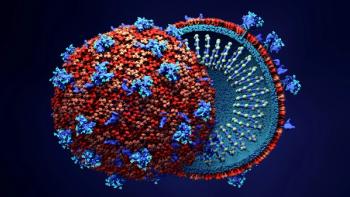
- MHE January 2024
- Volume 34
- Issue 1
On World AIDS Day, A Question: Is Ending HIV/AIDS Really Possible?
U.S. and United Nations health officials have set ambitious 2030 goals for ending HIV and AIDS. It looks like those efforts will fall short unless there is a burst of progress in the next few years.
The HIV/AIDS epidemic turned 42 this year. The first cases of Pneumocystis carinii (jirovecii) pneumonia among young men that were later linked to HIV infection were reported in June 1981. New HIV infections in the U.S. peaked in the mid-1980s when approximately 130,400 infections occurred in 1984 and 1985. Deaths from AIDS, which lag behind HIV infection, rose steadily through the 1980s, peaked in mid-90s and then dropped sharpy as antiretroviral therapy became available.
Globally, the epidemiologic pattern is roughly the same although the peaks occurred about ten years later. The number of new infections peaked in 1995 when 3.2 million occurred, according to a factsheet issued by the Joint United Nations Programme on HIV/AIDS (UNAIDS) to mark World AIDS Day. AIDS-related deaths worldwide peaked in 2004 when 2 million people died from the disease, according to UNAIDS.
With peaks in the past and most of the statistical indicators of HIV and AIDS in sloping downward, U.S. and United Nations health officials have circled 2030 as the target year for ending the HIV/AIDS epidemic. “Ending” is hedged, and sometimes qualified as meaning “ending as a public health threat.” It isn’t defined as meaning no new HIV infections or no AIDS-related death. Even so, the goals are ambitions. Some of the recent data about HIV and AIDS in the U.S. and around the world suggests that there is little chance that they will be met.
In 2019, U.S. health officials issued the “Ending the HIV Epidemic in the U.S.” plan. It set various goals, but the main one was to reduce new HIV infections by 75% by 2025 and by 90% by 2030.
According to data reported by the Centers for Disease Control and Prevention (CDC) in May 2023, there were 32,100 new HIV infections in 2021, a 12% decrease from the 36,500 new infections that occurred in 2017.
With 2017 as the base year, there would need to be just 9,125 new infections in 2025 to meet the 75% reduction goal in the ending HIV and 3,650 in 2030 to meet the goal of reducing new infections by 90%.
The chances of that happening don’t seem very promising. If the 12% decrease in new HIV infections that occurred between 2017 and 2021 continues between 2021 and 2025, there will be approximately 28,000 new infections in 2025, a far cry from the target of 9,125. Hitting the 2030 goal seems just as unlikely unless the rate of the decrease in new infections accelerates greatly in the next few years.
Interestingly, the number of new HIV diagnoses jumped from 30,585 in 2020 to 36,136 in 2021, a 18% increase after years of steady decline, according to the CDC’s HIV Surveillance Report for 2021. The unusual increase was likely caused by people have putting off testing and taking advantage of other medical services during the first year of the COVID-19 pandemic.
Increasing the use of
The United Nationals efforts to end AIDS stem from ambitious “
In 2014, UNAIDS launched 90-90-90 plan as a means to achieving the sustainable development goal for AIDS. It proposed that by 2020, 90% of all people living with HIV would know their HIV status; that 90% of everyone with diagnosed HIV infection would be receiving sustained antiretroviral therapy and that 90% of all those receiving antiretroviral therapy would have viral suppression.
By the time 2020 came around, UNAIDS conceded that the “the world is off-track for hitting the 2020 targets,” but also lauded “good progress” in reaching them. In an update posted on its website in September 2020, the UN agency that at the end of 2019, 81% of people living with HIV knew their HIV status, 67% were on antiretroviral therapy and almost 59% of people living with HIV had suppressed viral loads. After the 90-90-90 goals were missed in 2020, UNAIDS moved the goal posts to 2025 and increased the percentages from 90% to 95%, so, for example, 95% instead 90% of people living with HIV should know their status.
UNAIDS published a 196-page report in July 2023 titled “The Path That Ends AIDS” that has an optimistic view on the course of the epidemic and the steps being taken to end it. The report says that UNAIDS data show that 29.8 million of the 39 million people living with HIV globally are receiving treatment and that an additional 1.6 million people received HIV treatment in 2020, 2021 and in 2022. If that annual increase continues “the global target of 35 million people on HIV treatment by 2025 will be within reach,” the report says. Access to effective treatment has reduced the number of AIDS-related deaths globally by 52%, from 1.3 million in 2010 to 630 000 in 2022. The forward of the report highlights that Botswana, Eswatini, Rwanda, the United Republic of Tanzania and Zimbabwe have achieved the 95–95–95 targets and that at least 16 other countries are close to doing so.
Still, the report shows that there is a large gap to close if the 95-99-95 goals are to be met in 2025. Out of the 39.0 million people living with HIV in 2022, 86% knew their HIV status, 76% were receiving antiretroviral therapy and 71% were virally suppressed. The report says that “these are marked improvements since 2015,” but they are well below the 95-95-95 targets.
Articles in this issue
almost 2 years ago
2024 Formulary Movesalmost 2 years ago
New Treatments to Lower Lipoprotein(a)Newsletter
Get the latest industry news, event updates, and more from Managed healthcare Executive.




